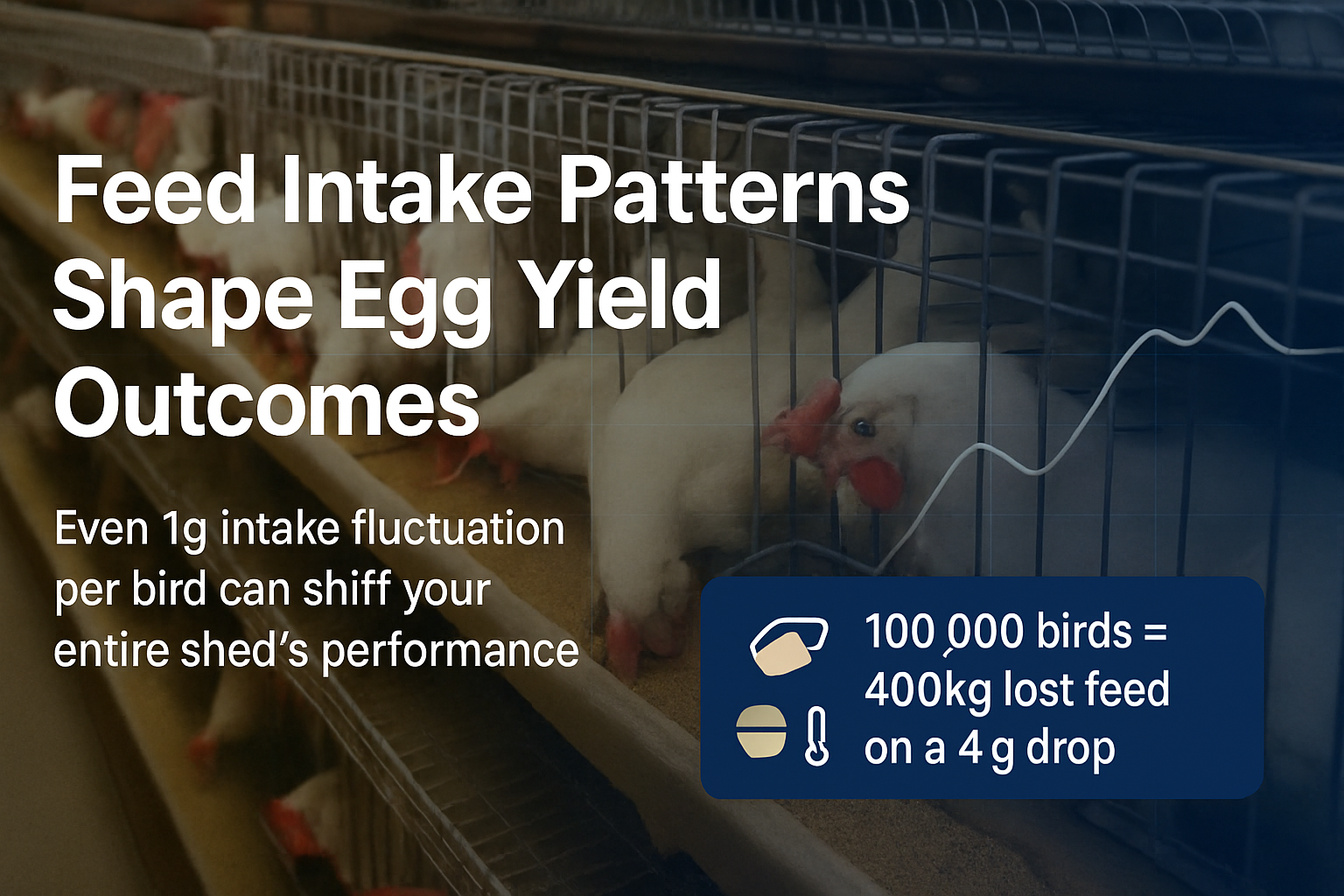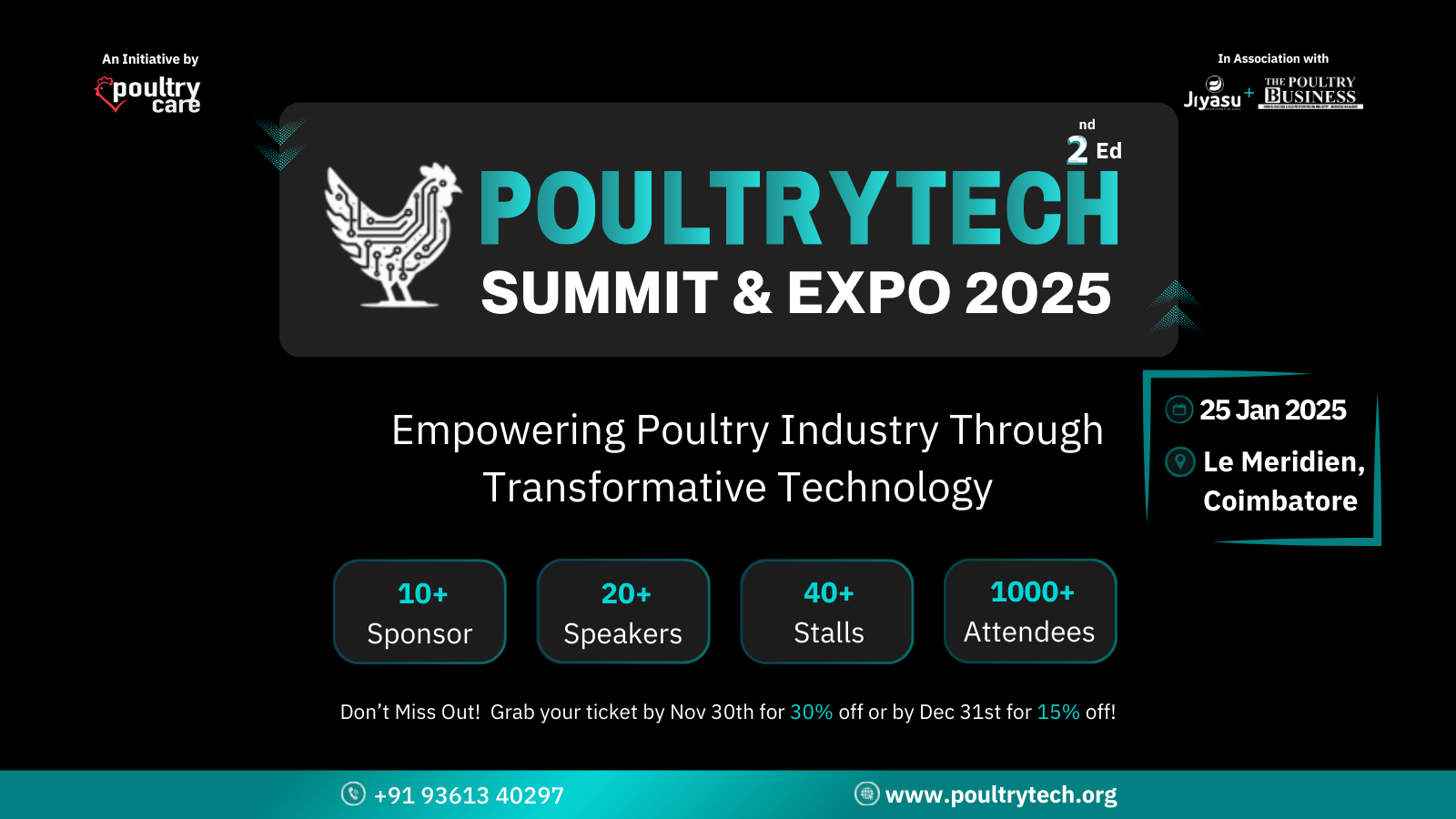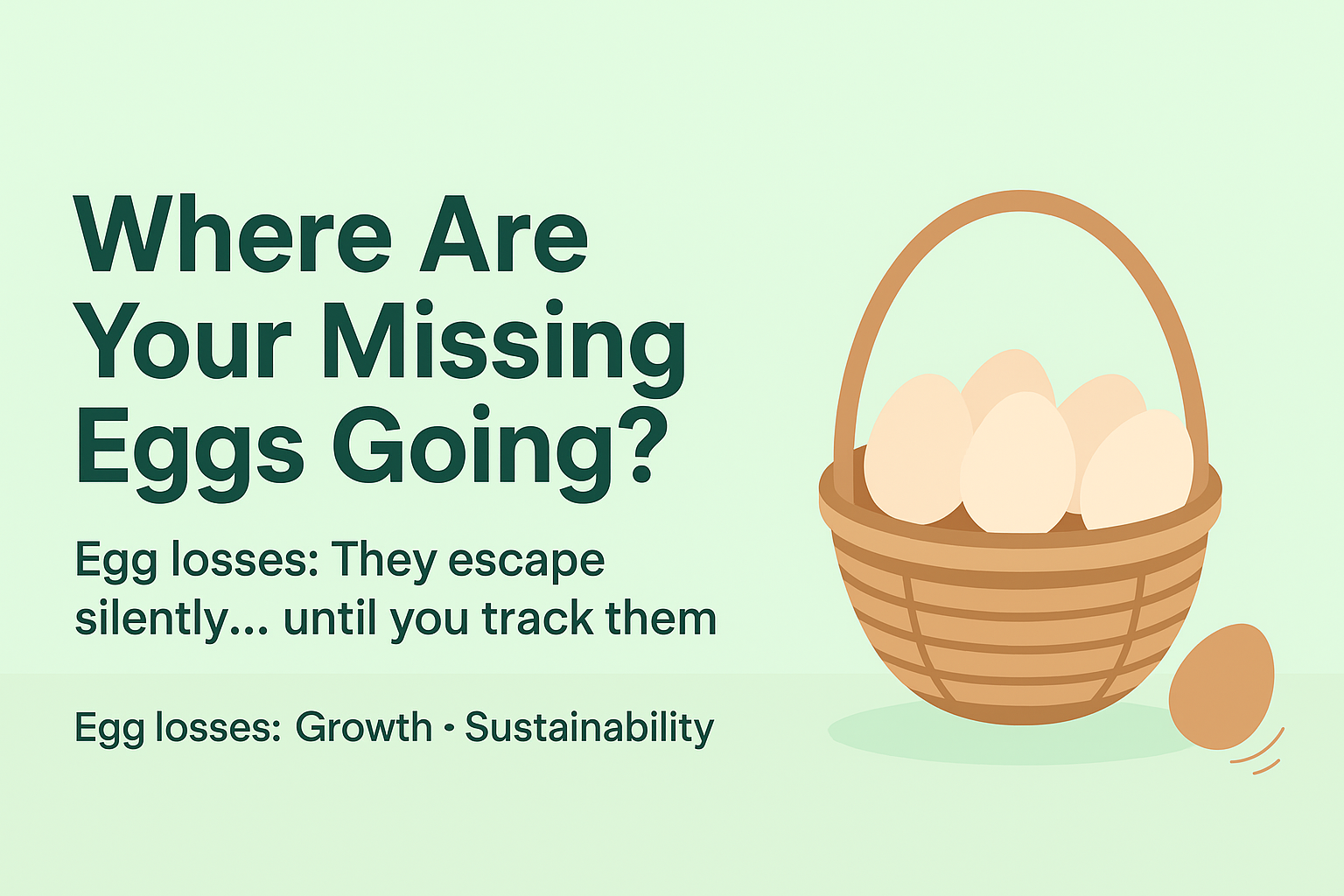In the world of commercial layer farming, egg yield is often seen as a result of bird genetics, feed quality, and farm conditions. While these are important, there is one hidden variable that directly influences your farm’s performance every single day. That variable is feed intake behavior.
Feed is not just an expense. It is a signal. When and how your birds eat affects not only their productivity but also how efficiently your farm operates. Unfortunately, many integrators monitor feed totals but ignore the patterns in which feed is consumed. These unnoticed trends silently drain profits and create unpredictable fluctuations in daily egg output.
In this blog, we break down why feed intake patterns matter, what often goes wrong in large-scale operations, and how leading farms are turning intake data into a daily yield prediction tool.
Feed intake is not just quantity but behavior
When feed is delivered and how it is consumed across sheds plays a much bigger role in production than many realize. Birds in commercial layer farms thrive on rhythm and routine. Any shift in feed access or timing disrupts their biological processes.
Most farms measure feed per bird per day and call it complete. But measuring quantity alone gives a partial picture. The real insight lies in understanding the flow of feed throughout the day. When do birds eat more. When do they avoid feed. What external conditions are changing their intake rhythm.
These are not side observations. They are core indicators of what your yield will look like tomorrow and the day after.
Common challenges that distort feed intake
Managing feed intake in a controlled environment sounds simple until practical issues start appearing. In large layer farms, even small disruptions can ripple across sheds and impact thousands of birds.
Late feed delivery is one of the most common problems. If feed does not arrive before the morning peak, birds miss their most important feeding window. This affects egg development and can delay laying time. Inconsistent delivery schedules confuse the flock and disrupt routine behavior.
Poor mash quality also affects voluntary intake. When the mash is coarse or dusty, birds may sort through it or reject parts of it. This leads to uneven nutrient intake and affects gut health.
Heat stress further complicates the issue. Birds eat less during hot spells. If cooling systems are not optimized or feeding time overlaps with heat periods, intake naturally dips. The problem is that this dip may not show up in egg count immediately. It often appears with a delay, making it harder to trace the root cause.
Feeder access inequality is another hidden problem. In large flocks, dominant birds often consume more while others eat less. Without equal access, average intake numbers can look fine while performance declines shed by shed.
Lastly, lighting mismatches affect how and when birds pick up feed. Light schedules that are not aligned with feeding windows can create poor calcium utilization and affect shell quality.
Why timing matters more than totals
Many farms think in terms of how much feed to give. But the most successful integrators think in terms of when feed is consumed. The early morning window is the most critical feeding period for layers. This is when nutrient absorption supports peak egg formation.
Feed must be accessible well before lights come on. If not, the birds delay their first intake and compress their feeding rhythm. The result is erratic intake behavior, uneven egg weight, and missed production peaks.
Tracking morning versus evening intake is a simple but powerful practice. It reveals how external stressors are affecting birds in real-time. Comparing shift-wise data gives clues about ventilation effectiveness, lighting timing, and staff efficiency.
Intake timing is also linked to water consumption. Birds drink and eat in tandem. A drop in water usage is often the first visible signal of deeper feed problems. When water intake changes, feed intake usually follows.
The invisible cost of inconsistent feed intake
The loss from intake fluctuations is not always seen in the feed bin. It shows up in the egg tray. When birds consume less feed even by a small amount, egg mass drops shortly after. This drop does not always impact egg count but often results in lower egg weight or delayed laying.
What makes it difficult is that the impact does not appear immediately. Most yield drops caused by feed intake issues appear forty eight to seventy two hours later. By the time a drop is visible, the root cause may have already passed, making correction harder.
This delay leads to a reactive approach. Integrators start solving for yield problems without knowing that the real issue started two days earlier with a change in intake.
By the time corrective action is taken, the farm has already lost yield, missed its cycle peak, or reduced the value of eggs produced.
The worst part is that many farms do not notice the loss at all. Because feed consumption seems stable at a glance, managers assume performance is acceptable. But when egg mass is compared against actual feed intake, the inefficiency becomes clear.
Turning feed data into a prediction tool
Modern commercial farms are now using feed intake data not just for reporting, but for early prediction. By mapping intake curves over time, farms can see shifts in consumption that signal upcoming changes in performance.
This is not complicated. It starts with daily shed-wise tracking. Intake is recorded in the morning and evening. Water usage is compared side by side. Ambient temperature is noted. The goal is to build a trend line that reflects how the flock behaves.
When a dip is noticed in intake, it becomes a trigger. The team investigates if there is a heat wave, a lighting issue, or a feed batch quality problem. Immediate corrections are made before the egg tray shows the loss.
This intake-first strategy is what separates high-performing farms from average ones. Instead of waiting for yield reports, they act based on behavior.
They also compare egg mass against feed intake, not just egg count. This gives a true picture of feed efficiency. How many grams of egg were produced per gram of feed consumed. That is the real performance indicator.
Building a practical intake monitoring routine
Creating a feed intake management plan does not require expensive tools. It starts with consistency in observation and logging.
Feed intake should be measured twice daily in every shed. Not just total feed issued but actual consumption. This can be done using silo weight, feed bin drops, or digital scales.
Ambient temperature and humidity should be logged daily and tied to intake records. Water intake should also be logged in parallel.
Feed texture and form must be standardized across batches. Teams should be trained to identify mash inconsistencies, flow blockages, or visible spillage.
Feeder access should be checked during peak feeding times to confirm even distribution. Staff should observe bird behavior to ensure that sub-dominant birds are also getting access.
Finally, egg weight should be sampled weekly and compared to intake logs. This closes the loop and gives a clear view of how feed translates into output.
Why feed intake patterns are a long-term profit lever
For commercial poultry integrators, the long-term advantage comes from consistency. That consistency depends on how well the flock consumes its feed day by day. Understanding feed behavior is not just about controlling cost. It is about controlling the predictability of performance.
When feed intake is stable, egg yield becomes stable. When feed intake fluctuates, even if feed cost stays the same, the return on that investment drops.
By turning feed intake into a measurable, observable behavior, integrators can stop guessing and start managing.
This not only improves current performance but also helps in planning feed budgets, forecasting output, and improving feed conversion ratios across production cycles.
Conclusion
Feed is the most controllable and most misread part of layer farm management. Every gram matters, but not just in volume. The timing, form, and environment around feed intake shape tomorrow’s egg yield.
Commercial farms that recognize this and monitor intake patterns will not just reduce feed waste. They will unlock higher yields, more predictable performance, and better profit margins without increasing feed quantity.
Feed intake patterns are not just numbers. They are early signals. When used correctly, they can become the most powerful tool in your farm’s production strategy.







